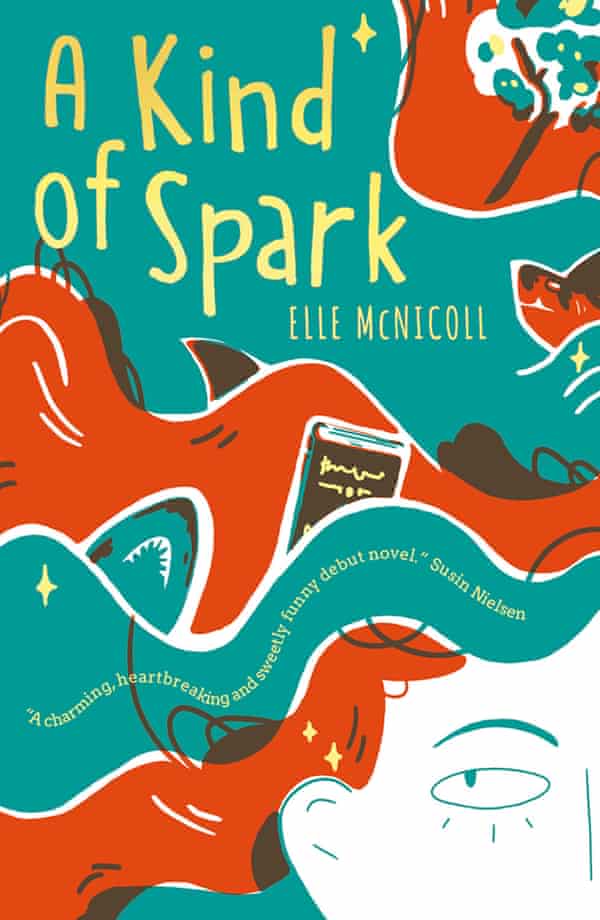Are we finally getting some good disability representation in fiction? Certainly, the publishing industry seems to have belatedly recognised the need to get disabled writers through the door. After a successful social media campaign, Amazon has recently introduced a “disability fiction” section. The Society of Authors now has a dedicated peer network for disabled and chronically ill writers. And in 2020, the Barbellion prize was set up to reward brilliant work by disabled authors. But does any of this mean that disabled people are finally seeing themselves and their experiences in the novels they pick up in Waterstones? It depends where you look.
Children’s literature is definitely getting better at representation. Indeed, when I asked disabled friends and acquaintances to name their favourite disabled character, almost all of them highlighted books aimed at younger readers, like Elle McNicoll’s A Kind of Spark. Lizzie Huxley-Jones, who is disabled themself, says that through their work as a children’s author and sensitivity reader they are seeing signs of progress. “Even just in the last three years in the UK – probably five if I’m being extremely generous – I feel like there has been a big push around securing autistic talent, publishing autistic stories, which I think is great because, historically, autistic people really didn’t get to tell our own stories.”
While Huxley-Jones acknowledges that there are still overlooked dynamics – characters with chronic pain, for example, or disabled kids of colour – they attribute the recent progress to a recognition that children deserve to see themselves reflected in the stories they read. There’s also the simple fact that a lot of kids’ books centre on a group of friends, rather than one protagonist, which creates space for more diversity.
Huxley-Jones hasn’t seen the same commitment to representation in the adult literature sector, where they say disability is still seen as a niche topic. While there are some novels with disabled characters out there, a concerning number of them stick to damaging tropes – perpetuating stereotypes rather than portraying disabled people with the same depth and complexity as other characters. As Cat Mitchell, a lecturer in writing and publishing at the University of Derby, puts it, there’s either “a tragedy narrative where the character dies at the end, or a narrative where either the person miraculously recovers or it’s discovered that their disability or illness was fake all along”.
Several of the people interviewed for this article pointed to Jojo Moyes’s Me Before You as the ultimate example of the problem: the main character becomes disabled and then – spoiler alert – kills himself. “Not only are these narratives not realistic,” Mitchell says, but “they’re never written as if there are disabled people in the audience. It’s that nondisabled gaze that they are writing for, which is really problematic.” She is equally disparaging of triumph-over-adversity narratives, in which a disabled person’s struggles in an ableist world are used to make a nondisabled audience feel lucky by comparison.
These tired stereotypes are exactly what Victoria Scott, who co-led the campaign for the Amazon disability section, set out to tackle with her fiction. Her debut novel, Patience, drew on her relationship with her nonverbal sister to explore the complex ethical questions that will come with a future in which genetic conditions can be cured. “I wrote it from the family’s perspective,” she says, but she purposely gave the disabled character a distinct and idiosyncratic voice. “I feel like society pushes people like my sister into the shadows, and it doesn’t acknowledge them … so when I wrote Patience, I wanted her to be an awesome character. She’s funny. She’s a bit sweary. She’s a massive Take That fan. And she’s got all these different parts of her personality. She’s a really interesting, multifaceted human being.” Scott’s determination to portray the inherent value of disabled life is in stark contrast to all the stories in which disability is a byword for worthlessness.

Books like Scott’s, which put disability front and centre, are important in an industry that undervalues these stories and sees them as niche rather than universal. Scott wanted to create the Amazon category to dispel this idea, and to encourage other authors to write stories that treat disability as interesting and worthy of artistic attention. Equally important, says Mitchell, is “incidental representation,” where a character “just happens to be disabled and it’s not really central to the plot”. This is almost unheard of in adult fiction, she says.
The reasons for this lack of representation are varied, but Mitchell and Huxley-Jones point to the inaccessibility of publishing as an industry. Hours are long and, for authors, pay is often delayed. Much depends on making contacts at long and inaccessible conferences. And because publishers pay an advance for a book long before they make money from it, they are incentivised to stick to narratives and characters they already know will sell. So it probably shouldn’t be surprising that we see the same tropes again and again.
Yet, the increasing diversity of children’s literature shows us that change is possible. If we can recognise that disabled kids deserve to see themselves represented in books, we must surely be able to recognise that disabled adults deserve the same. After all, disabled kids grow up. Hopefully, developments such as the new Amazon disability category and the Barbellion prize will encourage authors and publishers into the huge space disability representation could occupy. Diverse stories are important. We don’t always have to die at the end.

